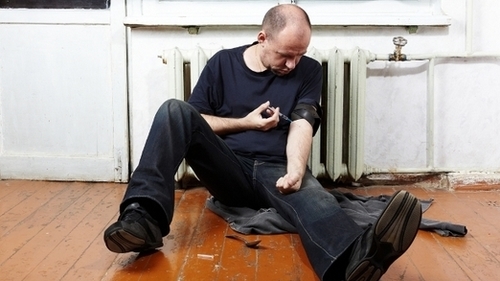NATIONAL INDIGENOUS DRUG AND ALCOHOL COMMITTEE
MEDIA RELEASE
National advisory body urges government and service providers to take action to prevent fetal alcohol spectrum disorder
The National Indigenous Drug and Alcohol Committee (NIDAC) has today released its Position Paper: Addressing fetal alcohol spectrum disorder in Australia, and is calling on government and health and related services to implement several recommendations to combat this preventable condition and to support sufferers and their families.
The NIDAC Chair, Associate Professor Ted Wilkes explains that “Fetal Alcohol Spectrum Disorder (FASD) is not well known in Australia, that it is an umbrella term describing a range of adverse effects caused by prenatal exposure to alcohol which presents as a range of symptoms in children, youth and adults, who suffer impairments to their development, learning and behaviour.
Professor Wilkes added that “NIDAC has produced this position paper to help raise the profile of FASD in Australia and provide key recommendations directed at government and service providers to help address this disorder.
If this disorder is not prevented or diagnosed early, it can have a profound lifelong impact on individuals, contributing to poor educational outcomes, behavioural problems, and early and ongoing contact with the justice system. It can also have a major impact on families and the community. It is however entirely preventable and if assessed and diagnosed early in life is potentially treatable.”
The Committee’s Co-Deputy Chair, Scott Wilson announced that “The Position Paper provides an outline of Fetal Alcohol Spectrum Disorder in Australia, acknowledging the various studies underway to examine the prevalence of FASD and reliable screening and diagnostic instruments that could assist in early diagnosis. It acknowledges the current investments in a range of projects to examine the efficacy of treatment options and strategies to support sufferers and their families/carers with the condition”.
He explains that “It has been found that sufferers of this condition experience a range of mental health problems, substance use issues, incomplete educational experiences and inappropriate sexual behaviour. However the condition is not currently recognised as a disability so there is little support available to sufferers and their families, such as access to disability and Centrelink assistance including Commonwealth Rehabilitation Services and Medicare reimbursements.
It is important to recognise that there are high proportions of Australian women (48%)[1] who report drinking while pregnant, and this means they could be placing their unborn babies at risk of developing this disorder.
There is also very little reliable data on the prevalence of this condition in the Australian population because is it not well understood in the community or by health professionals, resulting in absences of diagnosis and under-reporting.”
Ms Coralie Ober, Co-Deputy Chair of NIDAC also stressed that “Health and related professionals play an essential role in responding to FASD in Australia therefore it is imperative that workforce issues be addressed and FASD specific training and resources be provided to professionals working with individuals and their families and carers dealing with FASD.’
The Committee is calling on Australian, state and territory governments and service providers to take action to prevent more occurrences of FASD in Australia so that individuals, families and the community are spared from the trauma of dealing with this disorder.
It suggests implementing broad ranging social marketing campaigns to raise awareness of FASD and the risks to the fetus or baby if the mother consumes alcohol while pregnant and breastfeeding.
It is also recommends supporting health professionals and services through the development of national policy and clinical practice guidelines and workforce development and training that will enable screening and diagnosis and provide consistent and appropriate treatment of the disorder.
Professor Wilkes concludes by saying: ‘This is a serious issue facing our country and is not limited to indigenous people. It needs to be addressed by the whole community and I urge anybody with an interest in this area to obtain a copy of the paper by contacting the NIDAC Secretariat on 02 61669600 or by visiting our website – www.nidac.org.au’
A copy of the paper was provided in confidence last year to the House Standing Committee on Social Policy and Legal Affairs Inquiry into Fetal Alcohol Spectrum Disorder.
[1] Australian Institute of Health and Welfare. National Drug Strategy Household Survey Report. Canberra: AIHW. Latest Survey Report, 2011 (AIHW cat.no. PHE145).
National Indigenous Drug and Alcohol Committee:
The National Indigenous Drug and Alcohol Committee (NIDAC) was established by the Australian National Council on Drugs (ANCD) to provide independent expert advice on addressing Indigenous drug and alcohol issues in Australia to the ANCD and Government.
REPORT RECOMMENDATIONS
These recommendations have been designed to apply to the Australian community as a whole in the hope that as many Indigenous and non-Indigenous children, adults and families as possible are spared from the trauma of dealing with FASD.
Social marketing
1. That the Australian Government continue to develop and conduct national social marketing campaigns that (a) discourage tolerance of harmful drinking in the general population; and (b) raise awareness in the community of the potential impact of alcohol on the developing fetus. These campaigns need to be tailored to different cultural and high-risk groups and presented in a non-judgemental way.
2. That the Australian Government develop and actively disseminate alcohol and pregnancy information, including information on the Australian Guidelines to Reduce Health Risks from Drinking Alcohol, to the general population, for example through mandatory warning labels on alcohol products, and notices in pubs and other public places.
Policy and practice guidelines
3. That the Australian Government develop an integrated national policy framework on fetal alcohol spectrum disorder linked to the National Drug Strategy, with targeted funding objectives.
4. That the Australian Government continue to support the development of specific nationally based clinical guidelines, including screening and diagnostic instruments for diagnosis and treatment/intervention of fetal alcohol spectrum disorder for relevant sectors based on available evidence-based research.
Workforce development and training
5. That government and non-government health services ensure that all health care professionals are familiar with and actively incorporate the recommendations from the National Health and Medical Research Council’s Australian Guidelines to Reduce Health Risks from Drinking Alcohol (2009) into their practice, and particularly with females of child-bearing age.
6. That government and non-government health services require all health professionals to screen every pregnant female for alcohol use during their first antenatal visit and ensure all health professionals are well trained to carry out this screening process.
7. That government and non-government health services ensure all relevant health professionals receive training and education on safe alcohol use, fetal alcohol spectrum disorder and ways to support healthy behavioural change.
8. That Australian, state and territory governments support the development and provision of fetal alcohol spectrum disorder training programs for all relevant sectors, e.g. criminal justice system staff including prison staff, magistrates and judges as well as schools, to increase the understanding of appropriate responses to the needs of affected children, adolescents and adults with fetal alcohol spectrum disorder.
Prevention and service provision
9. That services ensure that all women of reproductive age, regardless of age, ethnicity, socioeconomic status or pregnancy, be screened for alcohol use, using brief intervention screening tools accompanied by appropriate advice and referral to an alcohol and drug service or other service where appropriate.
10. That access to specialist services and appropriately trained health professionals be provided for the diagnosis, support and management of children, adolescents and adults with fetal alcohol spectrum disorder.
11. That services ensure that individuals with fetal alcohol spectrum disorder and their families have access to specifically targeted integrated support services from trained professionals.
- That services ensure that high-risk groups and communities receive the services and supports necessary to improve their general social conditions, such as holistic early interventions enhancing transition to school.
Data
13. That the Australian Government extends and improves relevant national surveys on alcohol and other drug use among both Indigenous and non-Indigenous Australians to include measures of alcohol consumption among child-bearing and pregnant women.
Recognition of fetal alcohol spectrum disorder as a disability
14. That the Australian Government allows individuals diagnosed with fetal alcohol spectrum disorder full access to disability and Centrelink supports, including Commonwealth Rehabilitation Services and Medicare reimbursements.
- That the Australian Government ensures that eligibility for government-funded support and services includes criteria that reflect the functional and behavioural deficits of developmental disorders like fetal alcohol spectrum disorder.






